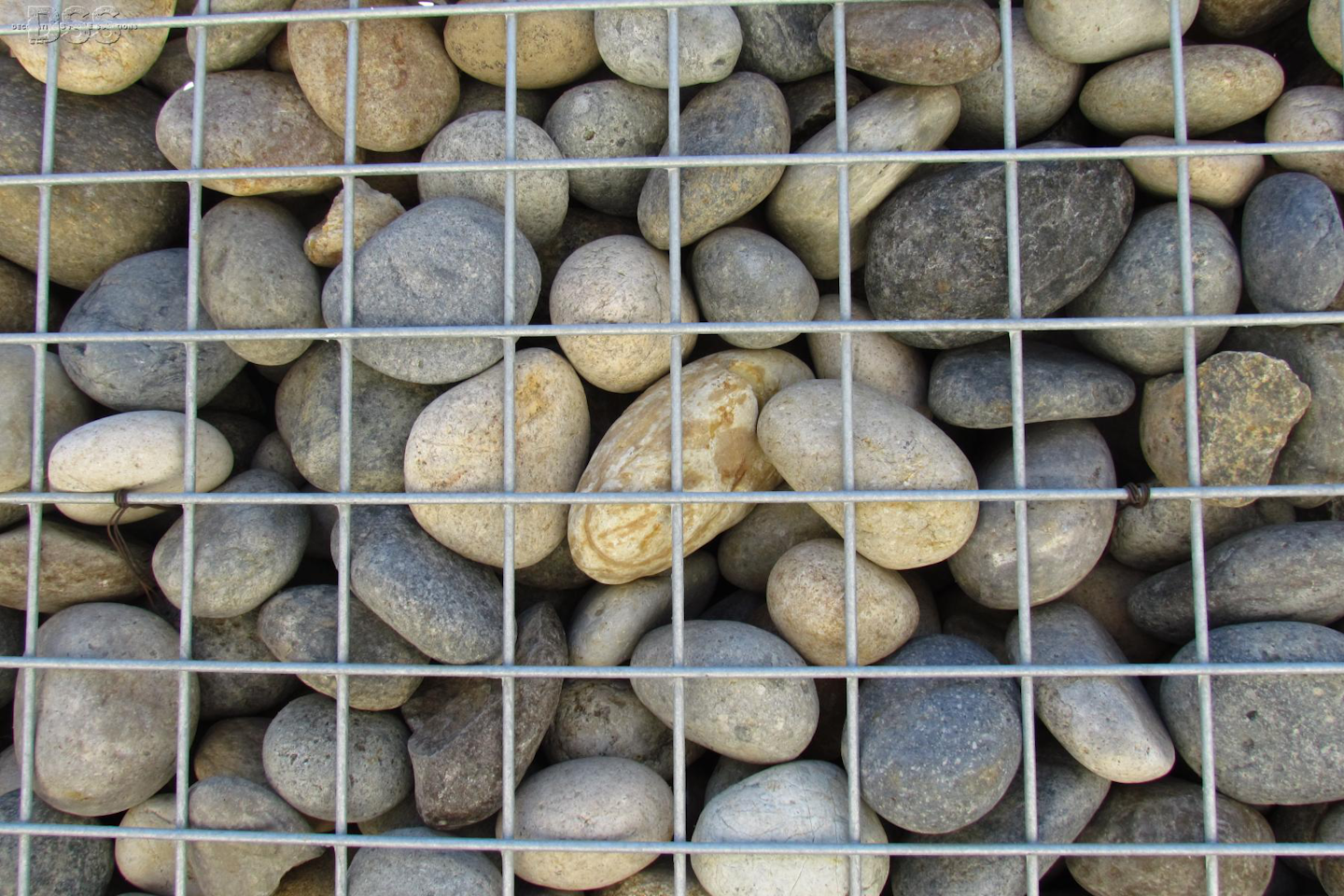The cost of the wall depends on the wire being used as there are various grades and gauges of wire mesh available, but they are typically all galvanized. The other determining factor on the cost is the fill material being used.
 Photo: Decorative Stone Solutions
Photo: Decorative Stone Solutions
Angular rock is the best gabion fill as they lock together and provide a non-moving unit. Jurgensen suggests using a heavier gauge wire if your customer wants to use a rounded river rock as the fill material to help it maintain its shape.
Jurgensen says unskilled laborers can easily learn to erect, fill and close the wire baskets properly.
“Pilings, underwater drainage systems and excavations are unnecessary,” he says. “There’s no need to drain the site or to construct a cofferdam for underwater installation. The first layer of gabions can be laid in water or in mud.”
Jurgensen says there’s no need to create a foundation for gabion walls as they end up weighing so much when you fill them with rock. He says what anchors the wall is the sheer mass and weight of the structure. The longer it’s there, the more it settles in and the stronger it becomes.
Any gabion wall 3 feet and under does not require the calculation of loads and stress it might take on, but Jurgensen says if you’re going higher than 3 feet you should get an engineer involved to make sure it’s safely constructed.
Related News
- PVC Coated Galvanized Wire Ropes
- Pros and cons of gabion walls
- Gabion retaining wall for Essex rail project
- Design/build: The benefits of gabion walls
- Advantages of Gabion Cages For Retaining Walls
- How to Install Chain Link Fence – Step-by-Step Guide
- 2nd Brand generated
- SGS Cooperation
- Welded Wire Mesh Panel Market Size and Growth 2021-2028

 carl_gao@live.cn
carl_gao@live.cn